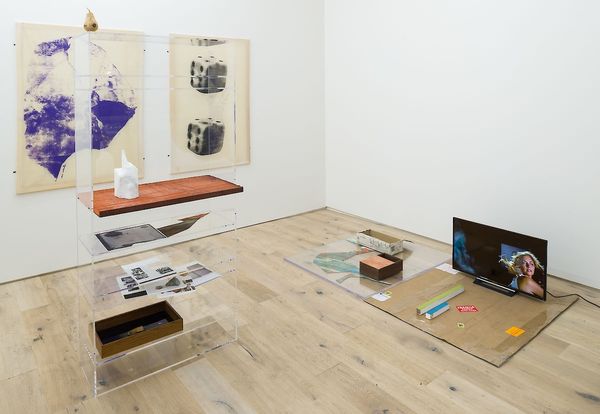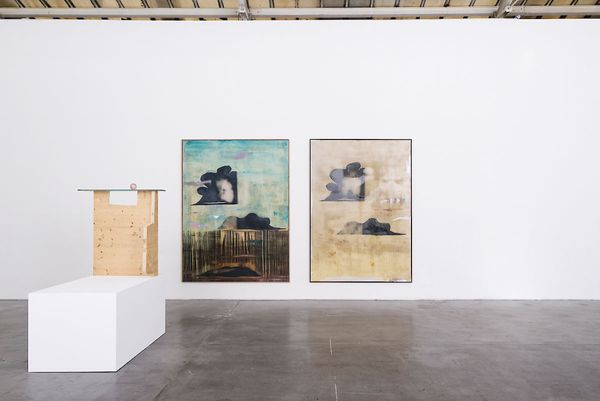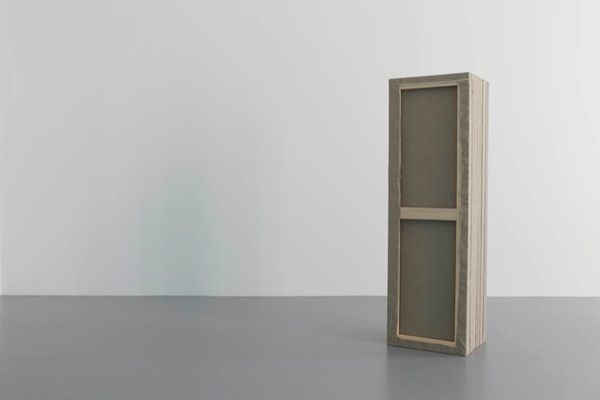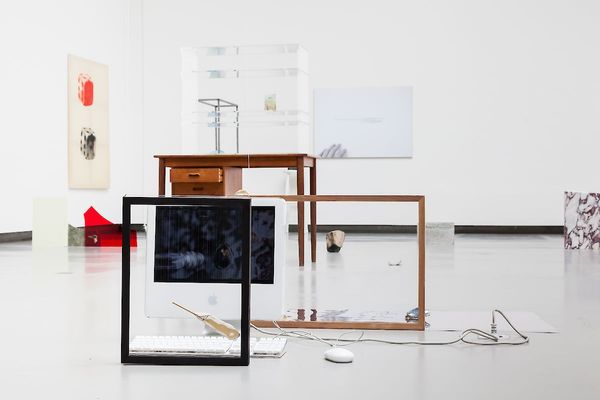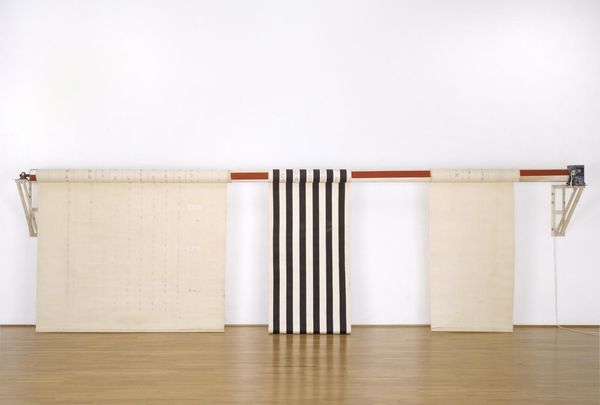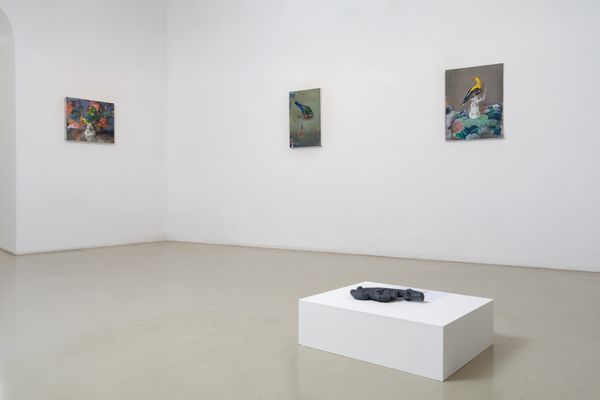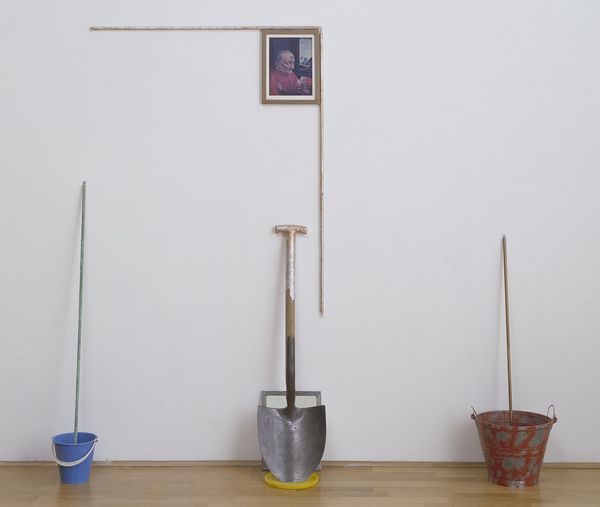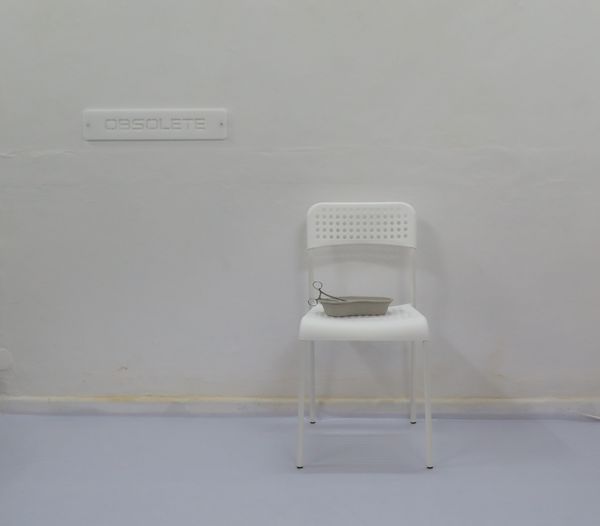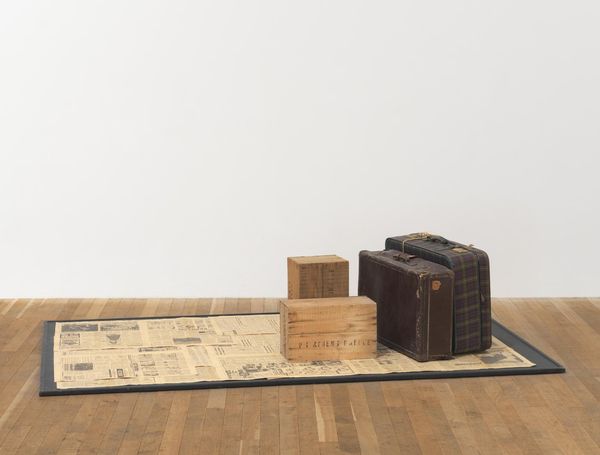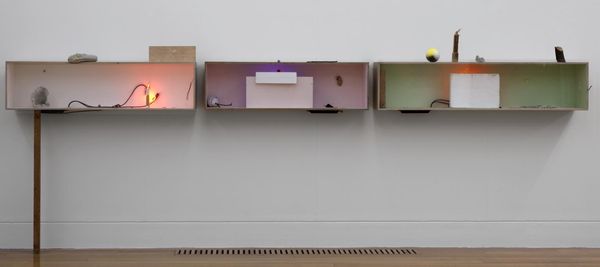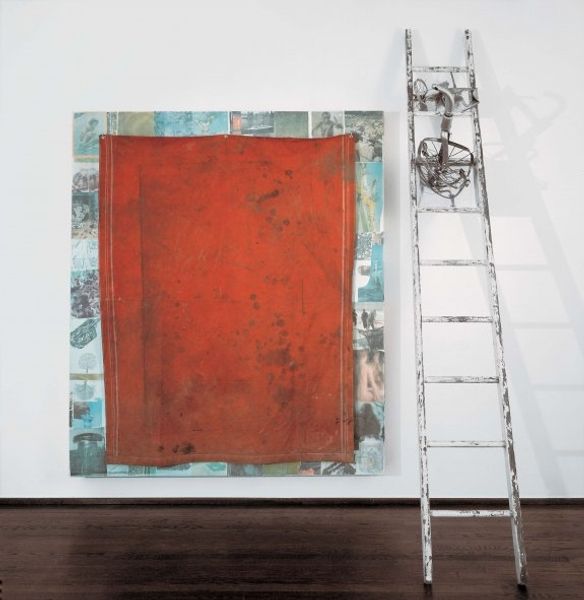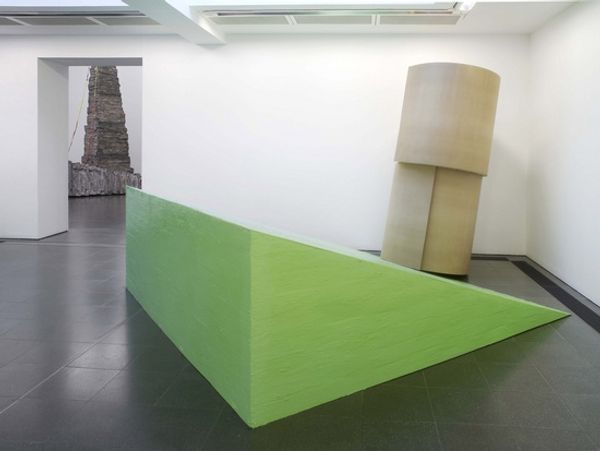
Dimensions: overall display dimensions variable
Copyright: © Ian Kiaer | CC-BY-NC-ND 4.0 DEED, Photo: Tate
Curator: This is Ian Kiaer's "Brueghel Project / Casa Malaparte," an installation piece now residing in the Tate Collections. Editor: It feels strangely sparse, almost like a stage set waiting for actors. The textures are very tactile; the paint, the rough edges of the blue block... Curator: Kiaer often references architectural spaces, and in this case, it's the iconic Casa Malaparte on Capri, filtered through Brueghel's landscapes. The social and architectural collide. Editor: That blocky form, its crude construction, points towards the raw materials, the unglamorous realities of building a utopian ideal. Curator: Indeed. Kiaer subtly critiques utopian aspirations, suggesting their inherent fragility and often unrealized potential within society. Editor: It definitely leaves you pondering the relationship between grand visions and their material underpinnings. Curator: Ultimately, Kiaer invites us to consider how art engages with broader historical and cultural narratives. Editor: And how those narratives are often shaped by the simplest of materials.
Comments
tate 6 months ago
⋮
http://www.tate.org.uk/art/artworks/kiaer-brueghel-project-casa-malaparte-t12874
Join the conversation
Join millions of artists and users on Artera today and experience the ultimate creative platform.
tate 6 months ago
⋮
This tableau was inspired by the experiences of two men, living centuries apart, in the same mountainous, remote region of Italy. The windmill here is taken from The Procession of Calvary by Flemish painter Pieter Brueghel who travelled to Italy and France in the mid-1500s. The scene of isolation is mirrored by the little balsa wood house positioned precariously on top of the foam on the stool, a reference to the Italian poet Curzio Malaparte’s retreat on a rocky promontory overlooking the Tyrrhenian Sea following his exile by Mussolini in 1933. Gallery label, April 2012
